When
June - September
Written by
Michel Alexander
Distance
2341km
Days
20 - 40
High point
659m
Difficulty
9/10
Unpaved
30%
Total Ascent
16433m
Ferries
1
Tunnels
This 2,300 km journey through Arctic Europe is one of the most ambitious and rewarding cycling routes in the north. Traversing Finland, Norway, and Sweden, it leads you through a region where silence stretches wider than the sky and every kilometer carries the echo of old cultures, deep wilderness, and raw endurance. Nothing is easy about this route, and it will test you to your limit in places. But that’s the reason to consider this journey.
I’ve been to the northernmost parts of Norway twice already, but I still feel the pull of those rough landscapes—places where you meet more reindeer than people. On those earlier trips, I stuck to the main roads in Finnmark. This year, I wanted to explore more remote areas, ride quiet gravel roads, and even tackle some hike-a-bike sections.
The trip took place in June. It takes time to get there if you don’t want to fly, and with only three weeks to spare, I chose the slow route: taking the ferry from Germany to Helsinki, then catching the next train north to Kajaani, in the middle of the country. Night trains can take you even further north, all the way to the Arctic Circle. I hope this story inspires others to ride the far north trails.
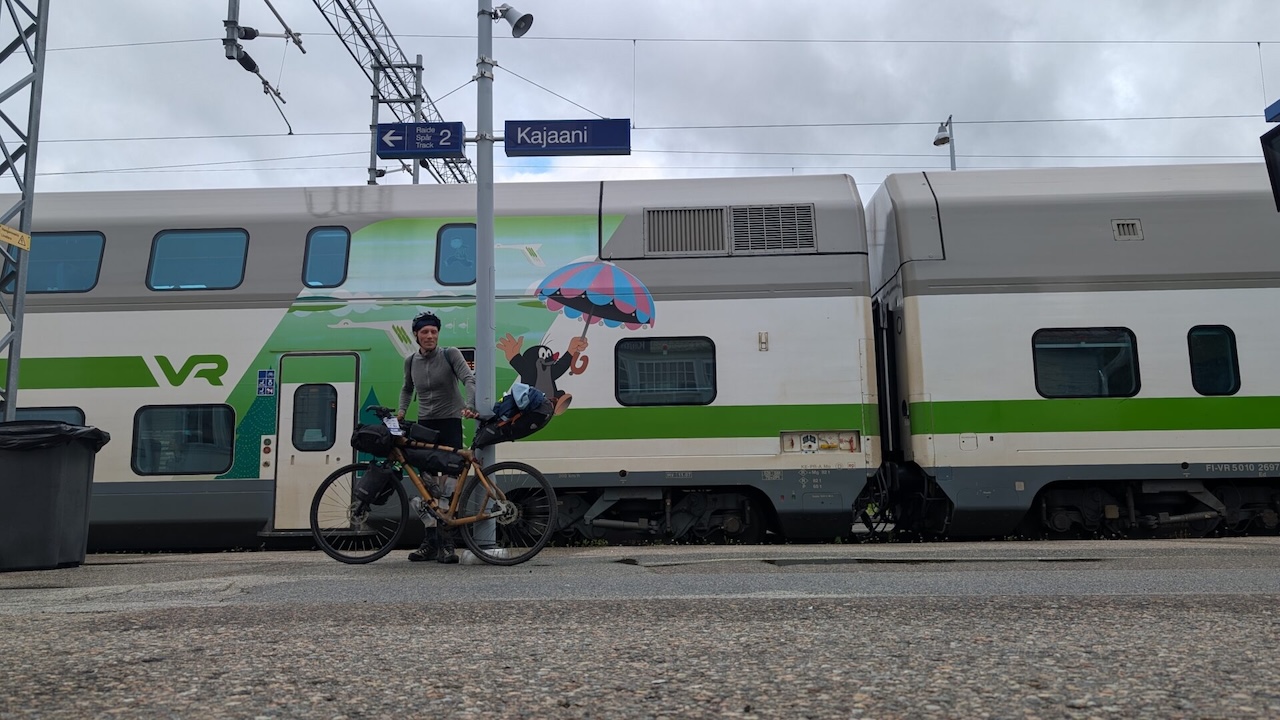
Starting in Kajaani, the route follows EuroVelo 13 (The Iron Curtain Route) along Finland’s eastern frontier. Quiet roads trace the Russian border past vast forests, remote lakes, and forgotten wartime landmarks. National parks like Hossa and Oulanka offer perfect stops for hiking or trail riding. Near Lake Inari, the sealed road ends, but the journey doesn’t. A challenging 20 km hike-a-bike trail takes you past the tripoint where Finland, Russia, and Norway meet: a place few cyclists ever reach.
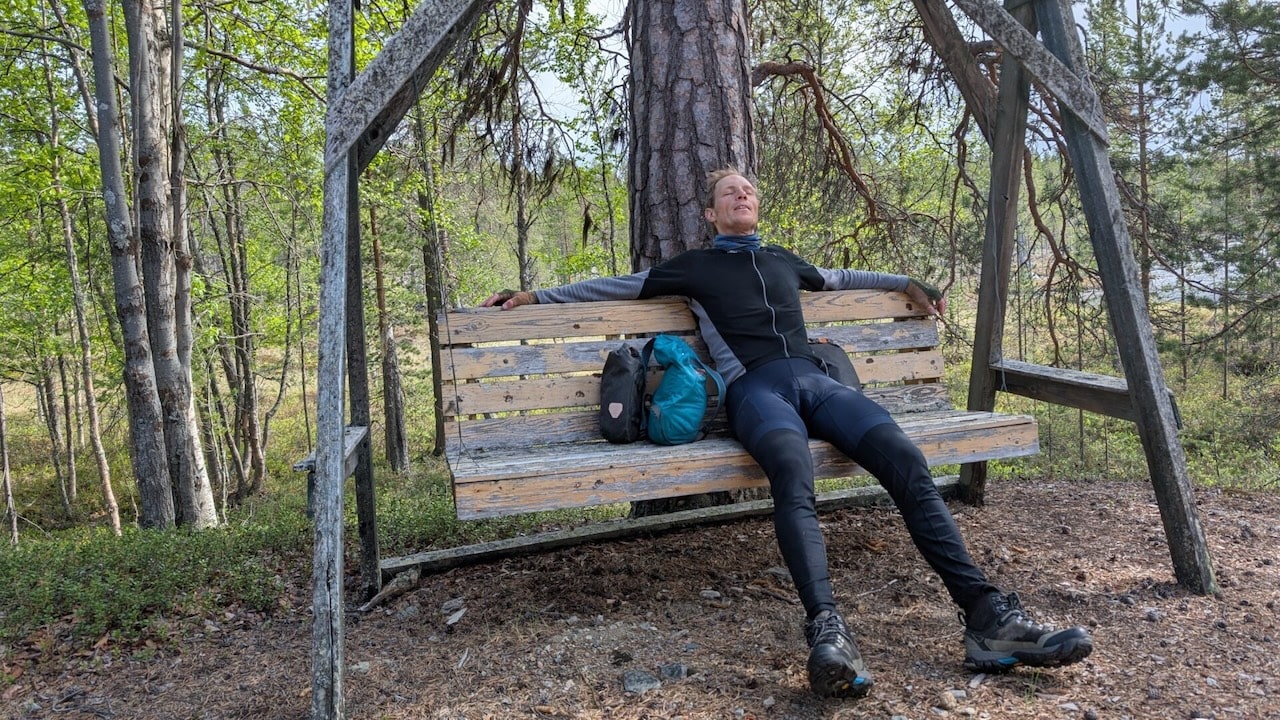
In Norway, the landscape opens up. Fjords replace forests, reindeer line the roads, and the midnight sun paints everything gold. From Svanvik to Mehamn, you’ll ride past calm rivers, through Pasvik Valley’s wilderness, and up to the windswept Arctic coast. One of the route’s high points, literally and symbolically – is Slettnes lighthouse: the northernmost on the European mainland, just shy of North Cape, but blissfully free of tour buses.

From there, an overnight ferry carries you to Havøysund. Then it’s back on the bike, along the remote and rugged coastal road south toward Skaidi and across the windswept Sennalandet plateau. After reaching Alta, the real adventure continues with the Arctic Post Road: 100 km of remote gravel winding past rivers, tundra, and even a detour to the towering Alta Canyon.
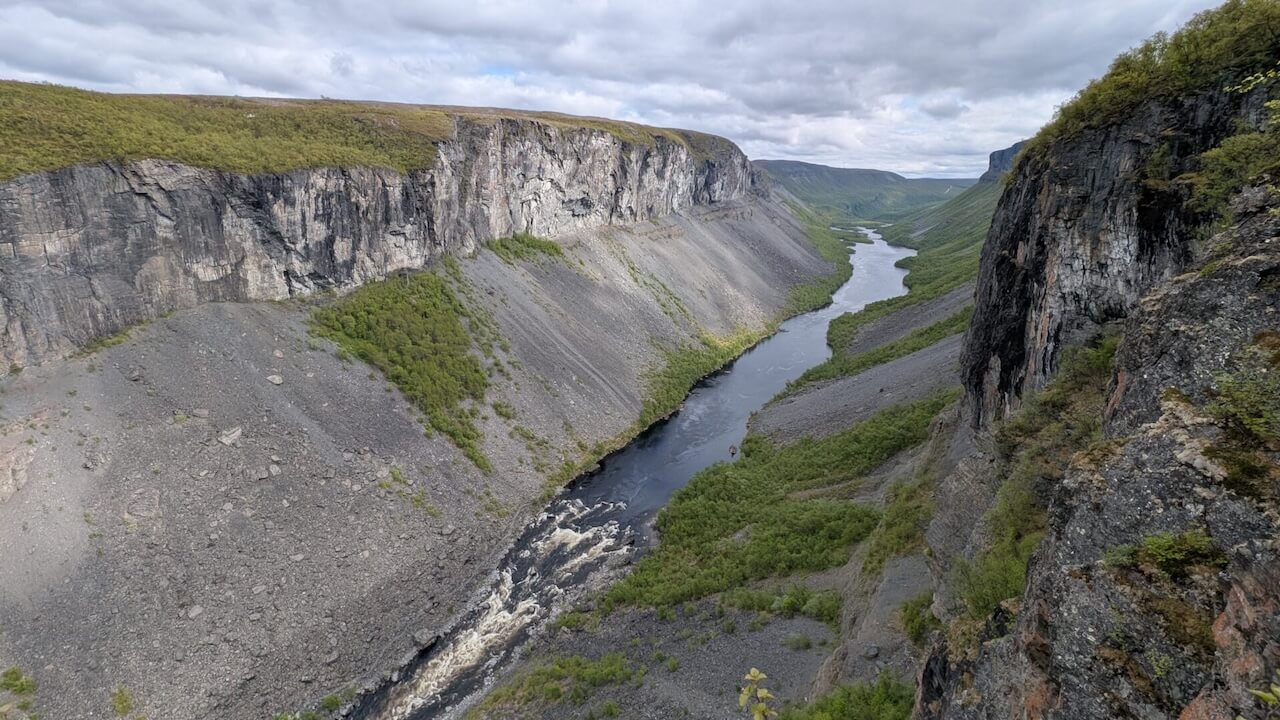
The final leg takes you to Kautokeino, one of the cultural centers of the Sámi people. From here, the route crosses back into Finland via the E45, where you can choose to explore Pallas-Yllästunturi National Park on foot or continue riding south through peaceful boreal forest. The journey ends at the train station in Gällivare, Sweden, or you can head to Kolari for a night train south to Helsinki.
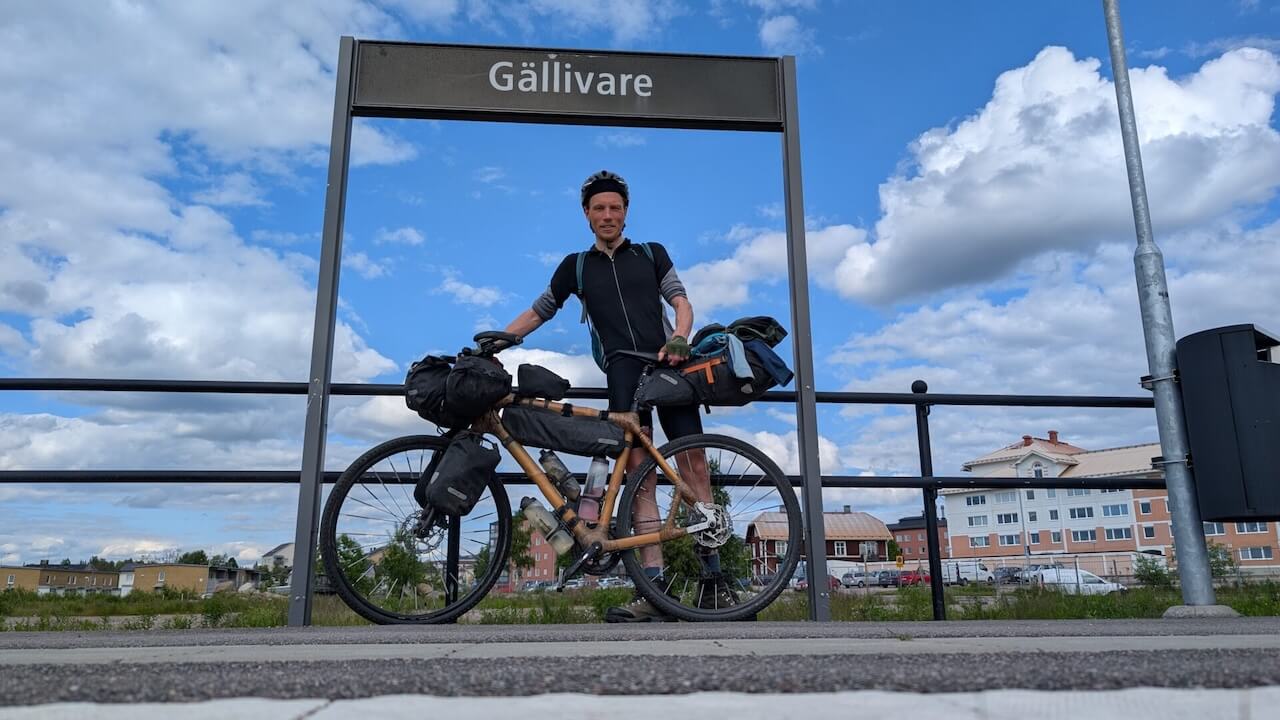

This is not an entry-level ride, nor is it suited to heavy bike touring setups if you plan to go off-road. It demands physical stamina, mental flexibility, and a willingness to embrace the unexpected. Weather conditions can change quickly in the Arctic, and surfaces range from smooth tarmac to rough gravel, boggy tracks, and rocky hike-a-bike trails. But for those prepared, the rewards are exceptional.
The toughest parts of the route is the hike-a-bike section near the tripoint between Finland, Norway, and Russia. This 15 km trail, once used by border guards, is no laughing matter. It shifts between short easy stretches and brutally difficult terrain: boulder fields, rotting duckboards, dense forest, fallen trees, steep climbs, and swamps. It’s wild, beautiful, and utterly exhausting.

Proper footwear is essential. Your shoes will get soaked, often within minutes, and without good wool socks and the ability to dry off or change, your feet will go numb. This is not terrain where you want to push through in discomfort. Be prepared, and pace yourself.
After reaching the tripoint, the trail continues for another 5 km on the Norwegian side. This section starts with a rocky section before giving way to more wet duckboards, eventually delivering you to a small parking area where a smooth gravel road begins again.
While most of the route follows quiet roads, around 30% is on gravel of varying quality. Snowmelt in early summer can flood sections of the track. And even on the paved stretches, wind and rain can turn a moderate ride into a grueling effort.
This is a route that rewards the resilient. If you’re willing to go beyond your comfort zone, you’ll experience a side of the north few ever see.
The North of the Sun route is already a serious undertaking, but if you’re craving even more adventure, the Arctic East 700 adds another layer. This extension weaves in some of the region’s best and most remote roads, offering extra kilometres, solitude, and striking Arctic scenery.
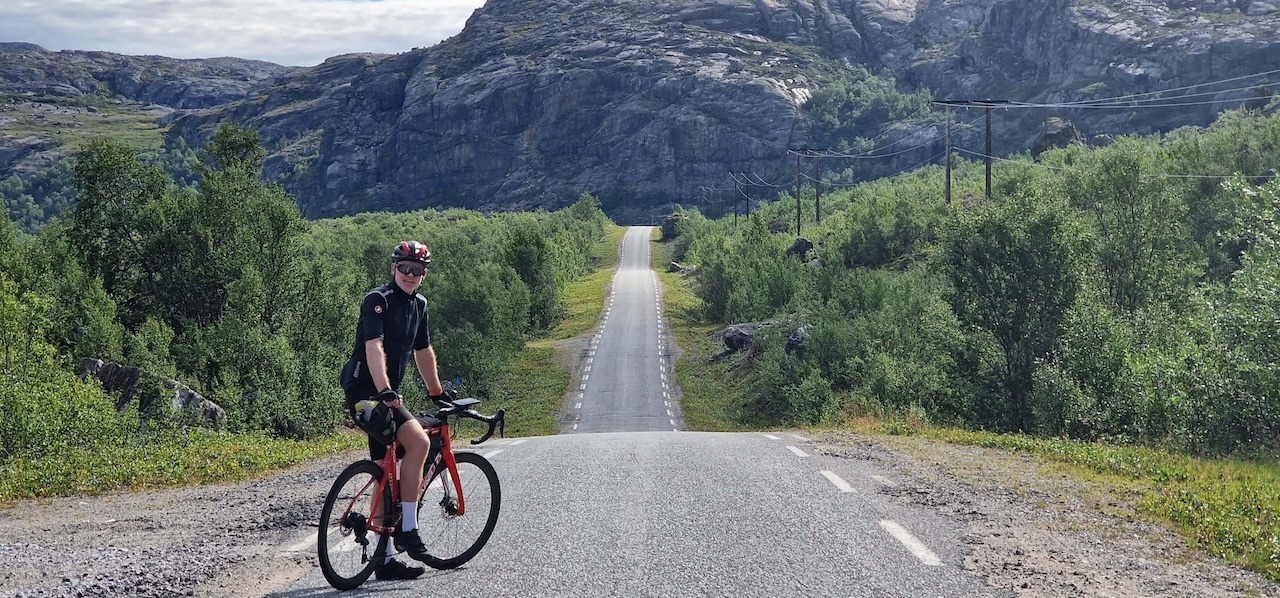
The Arctic Post Road is one of the true highlights of this journey, so we thought it deserved a closer look. Discover more
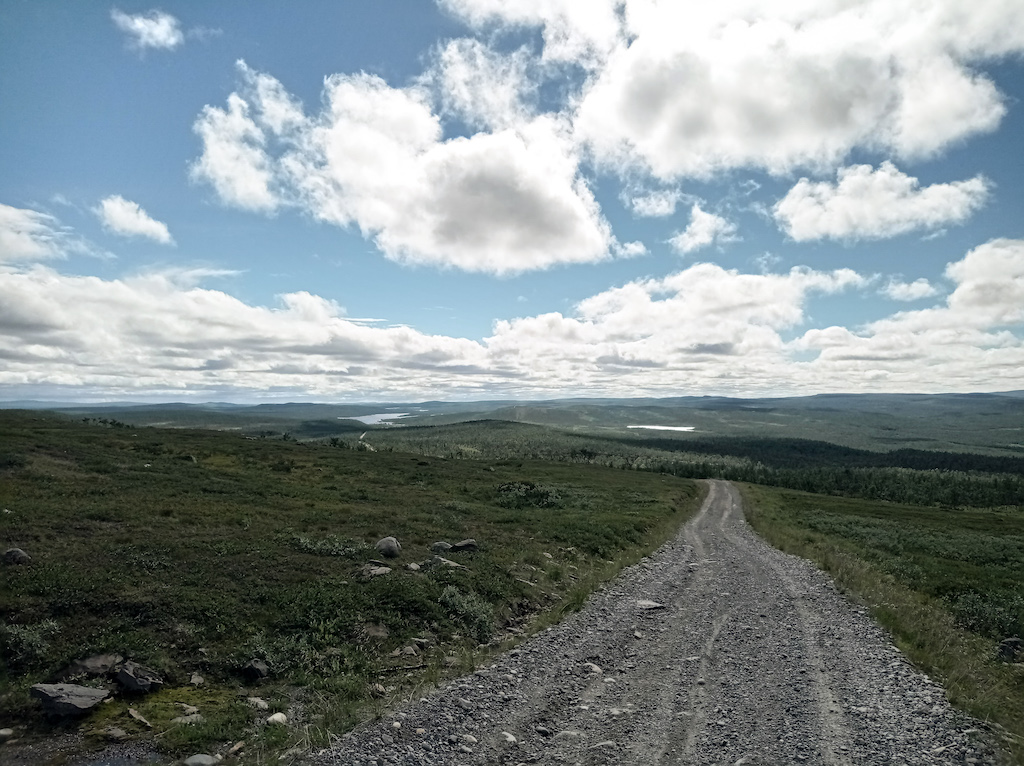
If you want to add Nordkapp to the route, here is a nice loop that can be done using the coastal boat.

Crosses Three Countries: Finland, Norway, and Sweden – offering cultural diversity, changing landscapes, and distinct national identities.
Remote and Varied Landscapes: From Finland’s endless boreal forests and wetlands to Norway’s Arctic fjords and Sweden’s inland wilderness.
National Parks Along the Way: Includes access to Hossa, Oulanka, Øvre Pasvik, and Pallas-Yllästunturi – ideal for hiking and nature breaks.
Historic Arctic Post Road: A 100 km gravel section across Finnmark with panoramic views, river crossings, and a hike to Alta Canyon.
The Tripoint Experience: Reaching the remote and rugged border where Finland, Norway, and Russia meet, via a demanding 15 km hike-a-bike trail.
Wildlife: Frequent encounters with reindeer, eagles, moose, and more, especially in northern Norway and Finland’s wild borderlands.
Sámi Culture: Several opportunities to visit Sámi museums and cultural centers, especially in Neiden, Karasjok, and Kautokeino.
Ride Under the Midnight Sun: Ideal for low-traffic night riding between mid-May and mid-July, when the sun never fully sets.
Northernmost Lighthouse in Europe: Slettnes Fyr near Mehamn – stunning Arctic coast views without the North Cape crowds.
Coastal Ferry Transfer: A scenic overnight ferry from Mehamn to Havøysund, linking two remote points along the northern coast.
Barren Arctic Plateaus: Ride across Sennalandet and Ifjordfjellet, with snow patches and expansive tundra views even in summer.
Challenging Terrain: Two major hike-a-bike segments, numerous gravel sections, and remote roads that demand stamina and self-sufficiency.
Finish with a Train Ride: End in Gällivare, Sweden or Kolari, Finland—both with rail links south for a relaxing end to the journey.
Getting There & Back
Train (Finland): VR services from Helsinki or Turku to Kajaani, with night train options to Kemijärvi, Kolari, and Rovaniemi
VR train info
• Several daily departures from/to Kajaani
• All Intercity and night trains allow bikes (max €8)
Train (Sweden): Inlandsbanan from Gällivare to Östersund
Inlandsbanan
• Connect to Gothenburg, Malmö or Stockholm via Snälltåget night train
Snälltåget
Optional Ferry Segments:
• Coastal ferries by Havila or Hurtigruten can help skip or extend segments
• Add the Varanger Peninsula or start further south via EuroVelo 1
When to go:
Best season: Mid-June to September
Midnight Sun: Ride 24/7 from mid-May to mid-July with no darkness
Food & Supplies
Supermarkets: Limited in remote areas. Carry food for 2–3 days, especially if taking the gravel route along the Finnish border
Water:
• Readily available from clean streams
• Supermarkets often have taps near bottle return stations, and bathrooms are common
Bike Setup
Recommended: Gravel bike with bikepacking gear (45-50mm tires)
Touring bike: Possible, but more challenging on rough sections
E-bikes: Not recommended due to limited charging access in remote areas
Toilets & Facilities
Found at:
• National parks
• Supermarkets
• Select rest areas and scenic roads (e.g. Havøysund)
In remote areas: Dig a hole, fill in, and take toilet paper with you. Practice Leave No Trace
Many businesses are closed on Sunday; stock up on food on Saturday.
Reindeer & Wildlife
You’ll be riding through Sámi herding areas—do not disturb the animals or their herders. More info: Reindeer Husbandry Area
Wild camping: Legal and easy under the right to roam in both Finland, Sweden and Norway
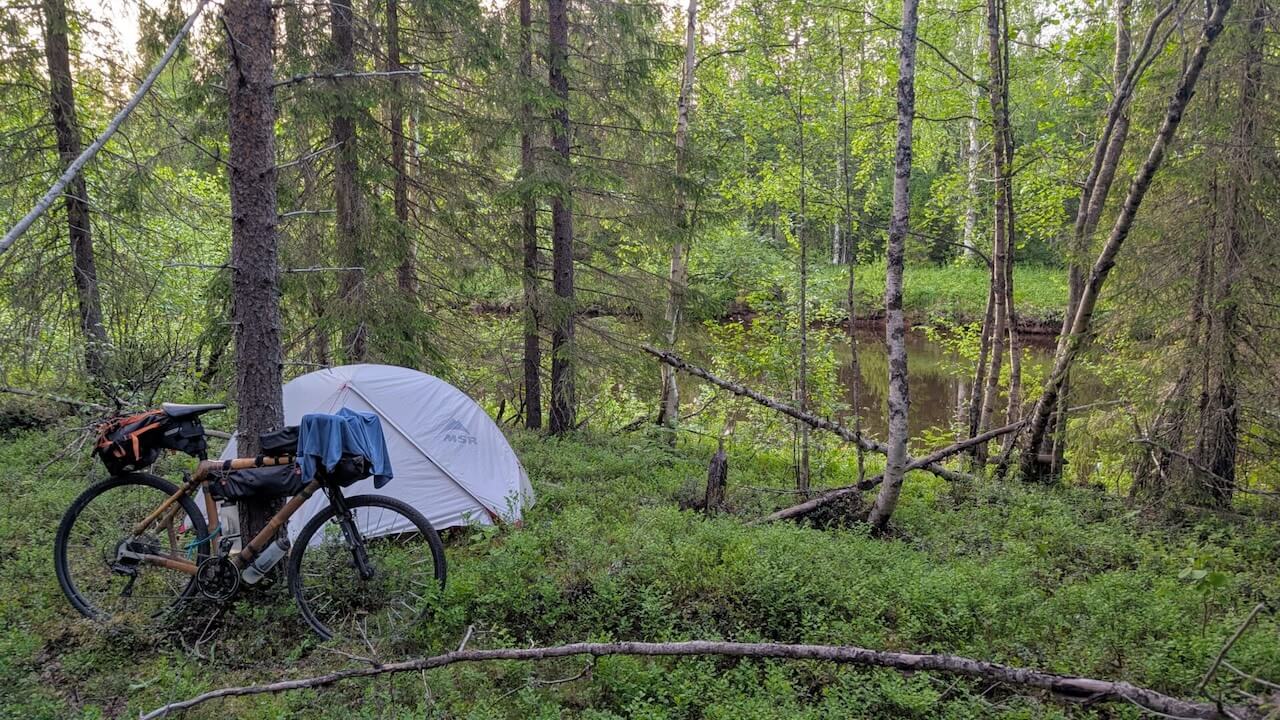
Facilities: Shelters, wilderness huts, and free cabins in Finnish national parks
• Outdoor Finland map
• Tulikartta shelter map
Campsites – use the Norcamp App to discover any open campsites along the route.
Hotels/Airbnbs: Available in towns but spaced far apart, plan ahead. Use the map/POIs and Google Maps to discover options.
This route is not recommended without a tent and camping gear.
Finland (VR)

Mainline access: Kajaani, Kemijärvi, Rovaniemi, and Kolari all have train service.
Bikes: VR InterCity and night trains take bikes for a small fee (max €8). Must reserve a bike space when booking.
Booking: www.vr.fi/en
Best stations for route access:
Kajaani – ideal starting point for the route
Rovaniemi – alternative start or midway access
Kolari – useful end-point with access to Pallas-Yllästunturi NP
Sweden (Inlandsbanan & Snälltåget)
Inlandsbanan (summer tourist train): Östersund – Gällivare
Bikes allowed (limited spots, book early)
Snälltåget: Night train Östersund – Malmö – Berlin
Bike transport available in dedicated coach
Best station for the route end:
Gällivare – excellent end point with connection south
Norway (VY Trains)
Trains only reach as far north as Narvik & Bodø, which is far west of this route.
Finland
Matkahuolto and OnniBus serve many rural areas.
Some long-distance buses take bikes if dismantled and packed.
Most regional buses offically don’t take bikes unless boxed or if there’s space.
Norway
Boreal, Snelandia, and Troms Fylkestrafikk operate local and long-distance buses in Finnmark and Troms.
Bikes are usually accepted, but not guaranteed. Depends on space and the driver’s discretion.
Buses between Kirkenes – Vadsø – Vardø or Alta – Hammerfest exist and will travel the main roads.
Sweden
Länstrafiken Norrbotten handles regional buses.
Bikes are not allowed unless folded or boxed.
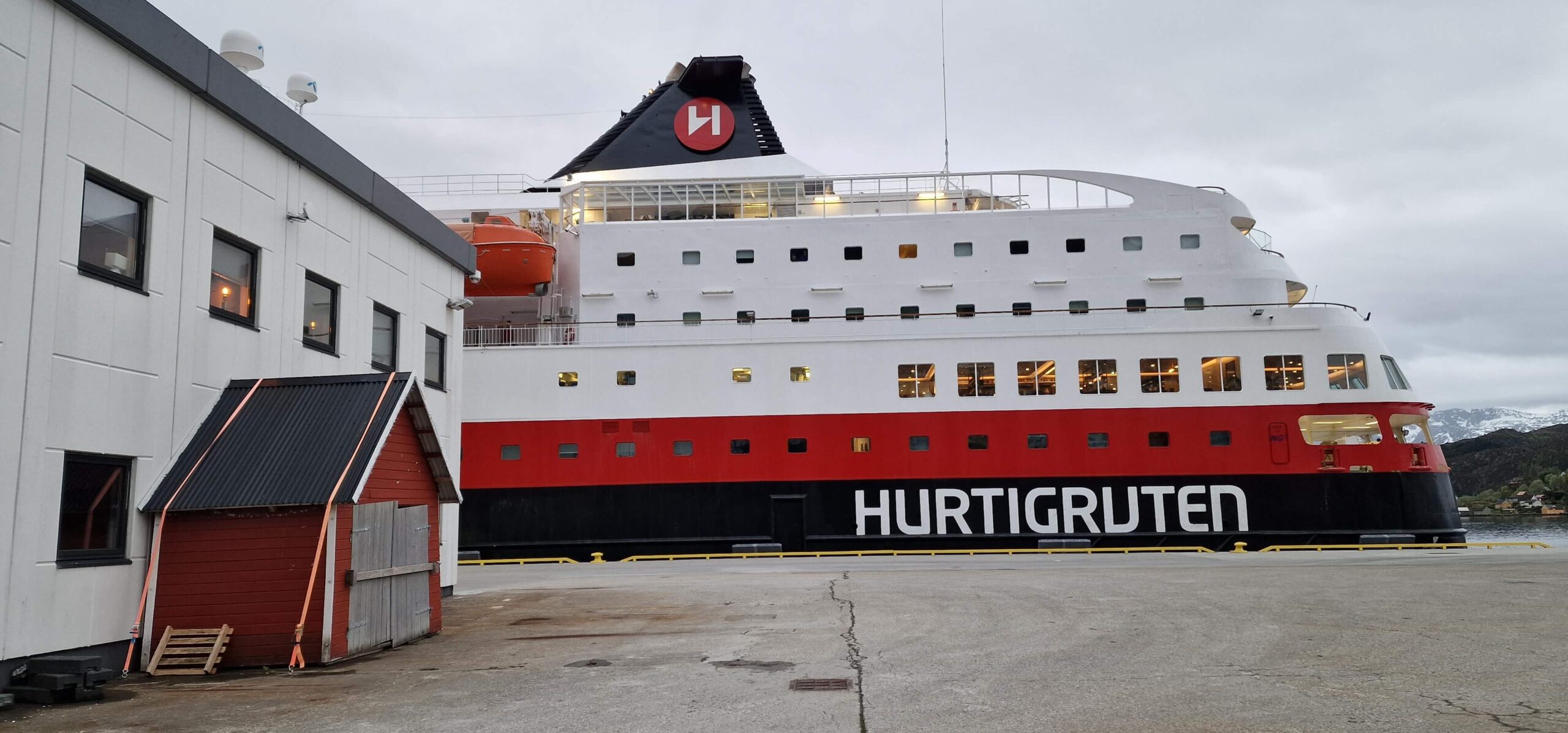
Havila & Hurtigruten Coastal Ferries
Daily coastal ferry between Bergen and Kirkenes with stops at: Mehamn, Kjøllefjord, Honningsvåg, Hammerfest, Tromsø, etc.
Bikes are allowed, but reserve in advance
Practical for skipping sections or linking to Nordkapp or Havøysund
Smaller ferries
Some local ferries (e.g. Neiden area, Varangerfjord) exist but have limited summer schedules. Always check locally.
Bikes are often allowed, but check capacity in advance
Practical Airports Along or Near the Route
Finland
Kajaani (KAJ) – small regional airport, limited flights (often via Helsinki)
Rovaniemi (RVN) – major hub with flights to Helsinki, seasonal Europe links
Ivalo (IVL) – good mid-route option, flights to Helsinki
Kittilä (KTT) – near Ylläs/Pallas NP, flights to Helsinki
Norway
Kirkenes (KKN) – full-service Arctic airport, good for bailout or start
Alta (ALF) – central Finnmark hub, regular domestic flights
Mehamn (MEH) – small regional, limited flights
Lakselv (LKL) – another regional option near Karasjok
Sweden
Gällivare (GEV) – small regional airport, limited to Stockholm flights
Luleå (LLA) – bigger airport, more connections, ~250 km southeast
Flying with a Bike
All major carriers (Finnair, SAS, Norwegian) allow bikes with advance reservation, but rules vary.
Must be boxed or bagged. Check weight/size limits.
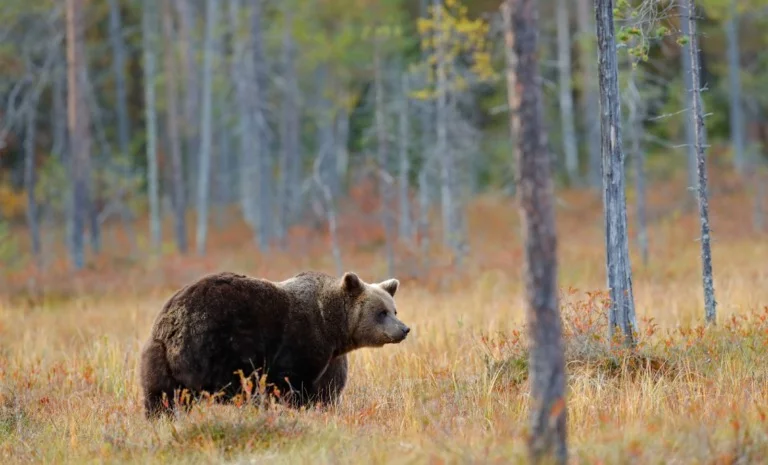
Brown Bears (Finland, Sweden, occasional in Norway)
Very rare to see, especially while cycling—they avoid human contact.
Most active: dusk and dawn, especially in forested areas in Finland and Sweden.
If you see one: stop, stay calm, back away slowly—never run.
Avoid surprising them: make some noise when off the bike in dense forest or during hike-a-bike sections.
Moose (All countries)
Most dangerous large animal statistically, especially during the rut (autumn) or if startled.
Can be aggressive if cornered, especially cows with calves.
Keep your distance and don’t try to pass too close.
Reindeer (All countries)
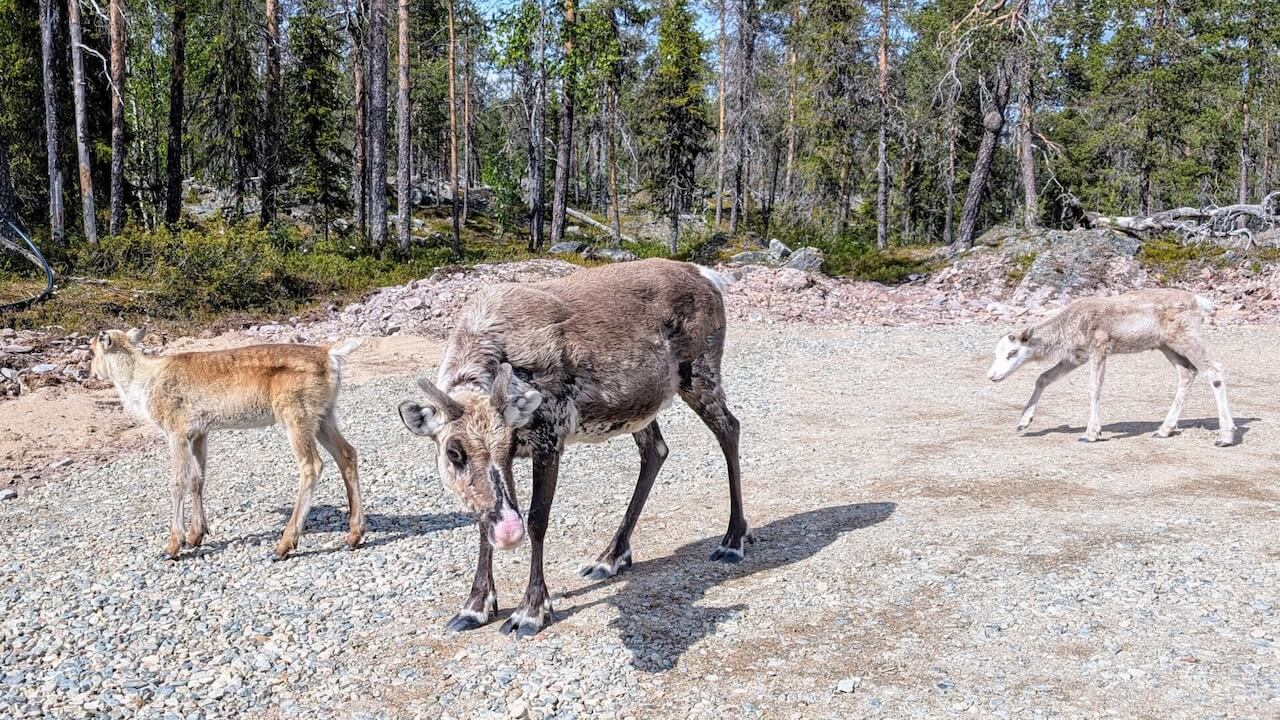
Not dangerous.
Common on roads in northern Norway and Finland—more of a traffic hazard.
They move slowly and unpredictably. Slow down and give them space.
Insect Hazards
Tips
• Bring a mosquito face net and plenty of insect repellent
• Wear long clothing or use arm/leg warmers. They can bite through some clothing, especially wool.
• Coastal areas are mostly mosquito-free due to wind
• As one Finnish cyclist said: “Mosquitoes aren’t a problem, just don’t stop.”
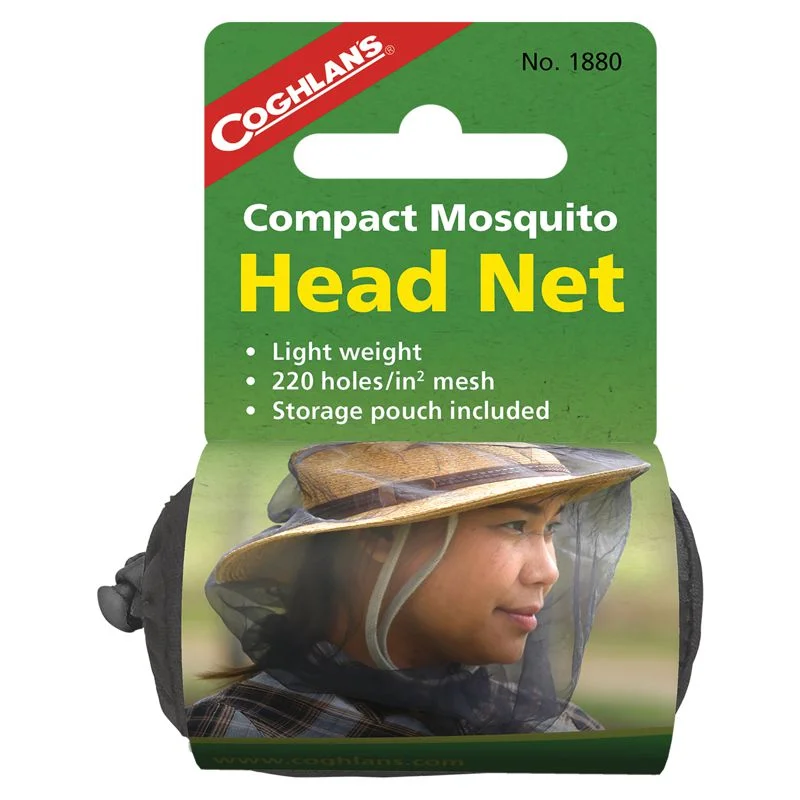
General Tips
Avoid leaving food waste near your tent or rest spots, this attracts wildlife.
Make some noise in a dense forest when off-bike.
Never feed animals.
Avoid cycling too close to moose or reindeer, especially mothers with calves.
There are none on this route
This is a long ride covering a large area. Expect big differences in regions for climate and weather. Riding through Arctic Scandinavia means dealing with unpredictable, often extreme weather conditions, even in summer. While it can be stunningly beautiful, the environment is also wild, raw, and unforgiving if you’re not prepared. Here’s what to know:
Rapid changes: Sunshine can turn to freezing rain or hail in a matter of minutes, especially in exposed areas like the Nordkyn Peninsula or the mountain plateaus between Ifjord and Mehamn.
Mountain passes (like Sennalandet, Ifjordfjellet, and Laggu): prone to sudden temperature drops, wind, fog, and even snow flurries, even in June or early July.
Finnmark too has a certain mystique. Being about the same distance from Oslo as Istanbul, in some ways, it’s basically the last stop before the North Pole. The undoubted highlight of the journey is simply cycling the wild expanse of Europe’s last great wilderness. It will feel very lonely up here but isn’t that a reason to cycle it? The cycling heat maps of the world are full of well-ridden roads. Here you will join a small group of cyclists seeking something extraordinary. Passing wild herds of reindeer and perhaps not seeing another human for many hours is why you came – right? The ride comes to an end in the town of Kirkenes which has Russian road signs. This will indicate you have reached the boundaries of the Western world!
Finnmark too has a certain mystique. Being about the same distance from Oslo as Istanbul, in some ways, it’s basically the last stop before the North Pole. The undoubted highlight of the journey is simply cycling the wild expanse of Europe’s last great wilderness. It will feel very lonely up here but isn’t that a reason to cycle it? The cycling heat maps of the world are full of well-ridden roads. Here you will join a small group of cyclists seeking something extraordinary. Passing wild herds of reindeer and perhaps not seeing another human for many hours is why you came – right? The ride comes to an end in the town of Kirkenes which has Russian road signs. This will indicate you have reached the boundaries of the Western world!
All cycling routes published on CYCLENORWAY.com are simply a planning resource to be used as a point of inspiration in conjunction with your own due-diligence. All route guidelines were prepared under diligent research. However, we can never for certain insure the complete accuracy of the routes. Cycling in Norway is in general very safe. Nevertheless, should you choose to cycle this route you do so at your own risk.
Check out this helpful video to see how the routes can be uploaded onto your mobile device and cycling computer.
Cycling long distance is tough, and you should not attempt routes that are beyond your level.
If you discover any inaccuracies on this page, please let us know so we can correct them.


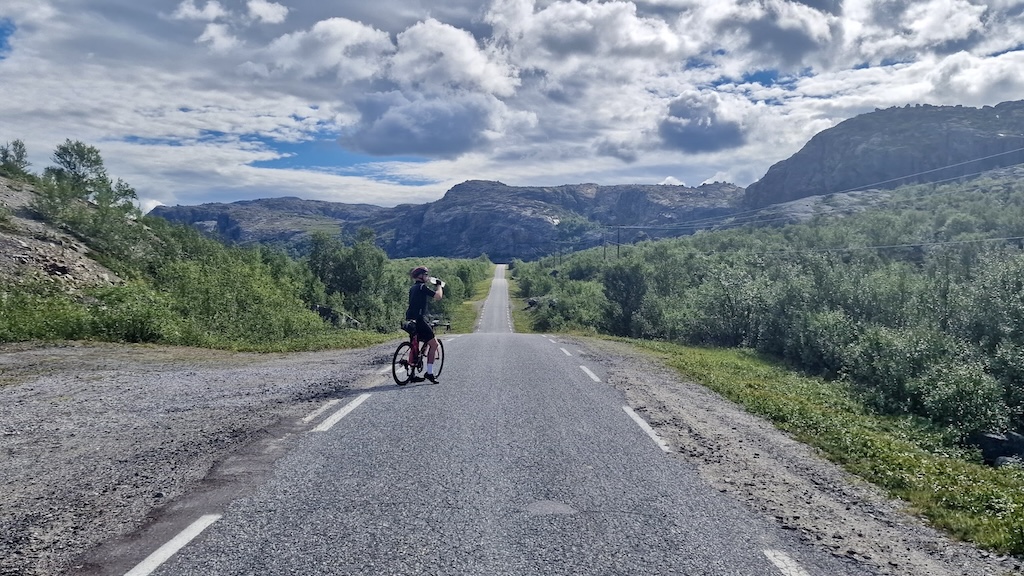



non-intrusive, offering informative news, blog posts, videos, and more.